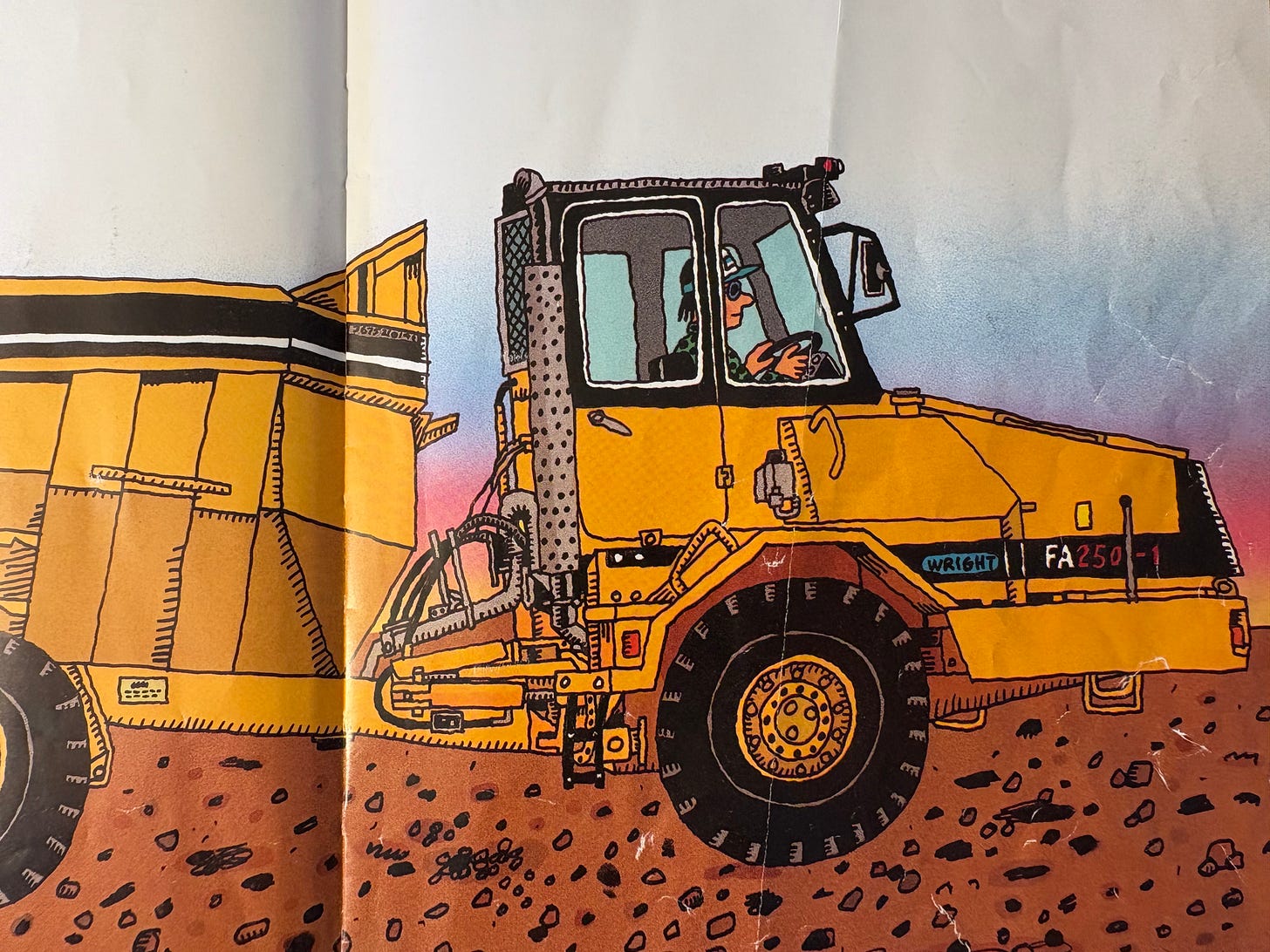
During my time as a parenting columnist, I conducted a really delightful interview with an executive at Scholastic who told me that they could never acquire enough kid-oriented non-fiction. It was the sort of observation that I never would have made on my own but that immediately made sense to me: of course kids want to understand how the world works, and there is so much to try to make sense of. There are plenty of books and series that meet that need in marvelously creative ways, from Jerry Pallotta’s “Who Would Win?” books that teach animal science through a series of imaginary cage matches to the delights of the DK Eyewitness series.
I also think that children’s natural curiosity about the world is something to keep in mind when considering what makes for compelling picture book illustration. Now, it’s absolutely the case that an excellent combination of words and illustrations can make technical drawings and blueprints fascinating: David Macaulay’s whole career is proof of that. But especially for younger children who aren’t reading on their own, I find myself drawn to illustration that is technically specific but illustrated without obsessive precision.
A wonderful example of what I mean is “Road Builders,” a 1994 step-by-step guide to building a stretch of highway. As you’ll be able to tell from the creases and tears in the photos that follow, this is one of the Imagination Library selections that my children love the most.
No one who looks at “Road Builders” would ever think for a second that it’s anything other than hand-drawn. The wobbles and asymmetries are visible from the cover and are visible throughout the book.
Simms Taback, the illustrator, isn’t aiming for realism here; there’s a depth of field to his scenes, but no real attempt to give the characters or vehicles mass, or to project shadows from every direction.
But despite being very deliberately hand-drawn, Taback’s illustrations include a really wonderful amount of detail. If he draws a dump truck in profile, he’ll be clear to capture the wires and hydraulics. Wheels have clearly-delineated rivets. Vehicles have model numbers. Construction helmets have tape with the owners’ name scribbled on them as well as labels with the brand name